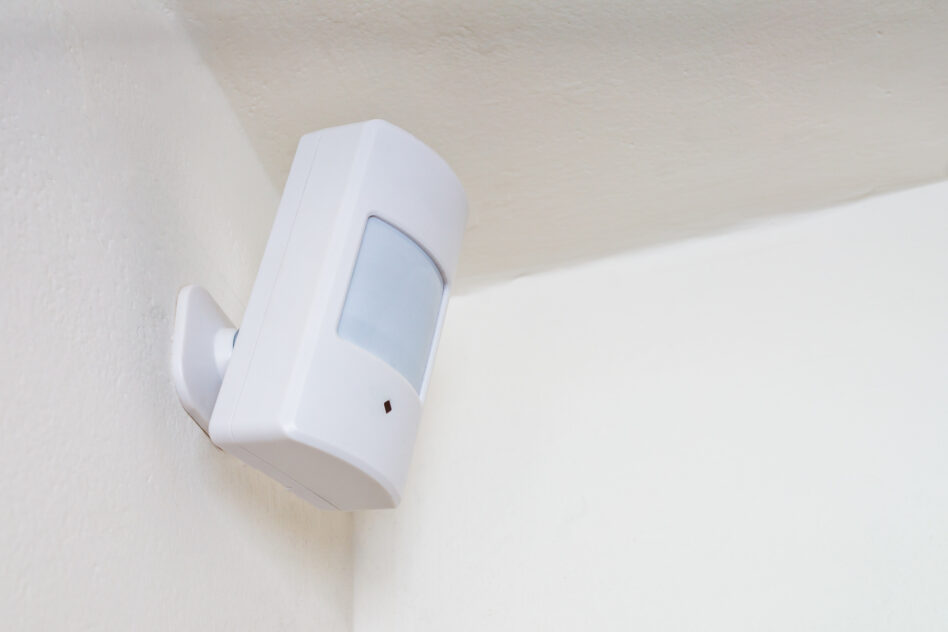Motion sensors are now an integral part of home security systems. But do motion sensors have cameras built into them, and if not, how do they capture movement? This article answers your question in depth!
Do Motion Sensors Have Cameras?
Usually, motion sensors don’t have cameras. While many people think cameras are an integral part of these devices for capturing motion, sensors operate through entirely different mechanisms.
Motion detectors don’t need cameras because they detect motion using microwave radiation or infrared energy.
Still, motion sensors can be a part of any other device to activate it when there’s motion in the room, including cameras.
All About Motion-activated Security Cameras
While cameras aren’t an essential part of motion sensors, some cameras have motion sensors, so they’re motion-activated.
In this case, the cameras can act as security cameras that only start recording when the device detects motion.
There are two types of motion-activated cameras. First, there are security cameras with built-in motion sensors, then you’ve got external motion sensors that can be attached to the security camera.
The great thing is, if you already have a security camera, you can get a compatible motion sensor. Then, you can simply connect the two devices based on the instructions in the user manual.
Benefits of Motion-activated Security Cameras
There are many reasons why motion-activated security cameras can be better than regular security cameras, and these are:
Cost
Though you might think motion-activated security cameras cost more initially, they can actually help you save more money in the long run.
The reason is that instead of the cameras constantly recording throughout the day, they’ll only start recording once they detect motion.
This can greatly save on storage space, so you won’t need to worry about buying costly cloud storage.
You’ll also spend a lot less time watching hours of footage. Instead, the camera records only short clips when there’s movement.
Footage Quality
To reduce storage space and cost, security cameras often record low-quality footage. This isn’t the case with motion-activated security cameras, as they don’t tape 24 hours of footage.
Instead, you only get minutes-long clips of high-quality videos. Not only can this make viewing much more convenient, but it can also help police investigate crimes.
Live Viewing
You can view your security camera’s footage anytime and anywhere. However, unless you’re watching the cameras 24 hours a day, you probably won’t be able to tell if there’s an unwanted intruder.
On the other hand, motion-activated security cameras can alarm you in case of movement. Even if your camera is recording throughout the day, it can send you live footage once it’s triggered.
How to Tell If a Motion Sensor Has a Camera
If you already have a motion detector, chances are it doesn’t have a camera. The reason is that the device would be much more expensive. You’d also be able to access the camera, or you’d get notified in case the sensor is triggered.
If you’re unsure if a motion sensor has a camera, you can check whether or not an external camera is attached to it. Alternatively, if you shine a flashlight at the motion sensor, it’ll blink a red or green light, indicating a camera lens.
It’s important to understand that security cameras are meant to be hidden. So, it can be incredibly hard to even find the motion sensor in the first place.
How Motion Sensors Work (And Why They’re Better Off Without Cameras!)
There are different mechanisms behind motion sensors. None of them involve cameras, though!
These devices allow for the capture of motion without the need for expensive night vision cameras, or for the cameras to be constantly filming to detect motion.
Let’s face it; if your motion sensor uses a camera to detect movement, it can be fairly easy to trick by just blocking the camera lens, which will say goodbye to your safety!
Newer tech motion sensors can pass through objects, so it’s quite hard to avoid triggering these motion sensors.
That said, the types of motion sensors that you can rely on are the following:
PIR
Passive infrared (PIR) motion sensors are the most common type of motion detection device. These devices sense the change in temperature between the background and the warm body on the move.
Yet, the PIR sensors don’t actually measure temperature. Instead, they detect the infrared radiation that warm bodies emit.
Microwave
Unlike PIR sensors, microwave motion sensors don’t detect existing frequencies. They release high-frequency waves that can reach objects at any distance, spanning from only one inch to 80 feet.
Electromagnetic frequencies basically bounce back from the object once they reach it. However, if that object is moving, the frequencies change. The motion sensor then reads the new frequency and detects motion.
Dual-tech
As the name implies, dual-tech motion sensors combine the two mechanisms in one device. The reason behind this is to decrease false negatives.
Any weather abnormalities or changes in temperature can easily trigger PIR sensors. On the other hand, microwave sensors can detect inanimate objects.
So, having the two mechanisms work together greatly enhances the motion sensor’s accuracy.
Frequently Asked Questions
How far can motion-activated security cameras detect motion?
Generally, the motion sensor on the camera can detect motion between 50 to 80 feet away. You can also adjust the sensitivity of your motion sensor so it can be triggered more or less easily.
However, standard security cameras can record objects anywhere between 20 to 70 feet during the day. At night, the camera won’t pick up far objects, and the video resolution will be much lower.
This means that while your motion-activated security camera can detect far-away movement, the footage might not be clear.
Do motion-activated security cameras work all the time?
The motion sensor device in the security camera is definitely working all the time. Yet, whether the camera is constantly recording or not depends on the type of security camera.
Some cameras only start recording when triggered, while other security cameras tape all the time. Once the motion sensor detects movement, the security camera then sends you notifications and live footage.






